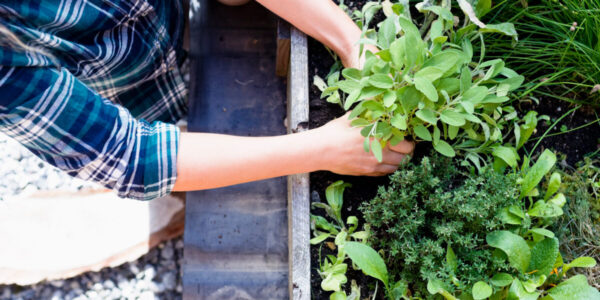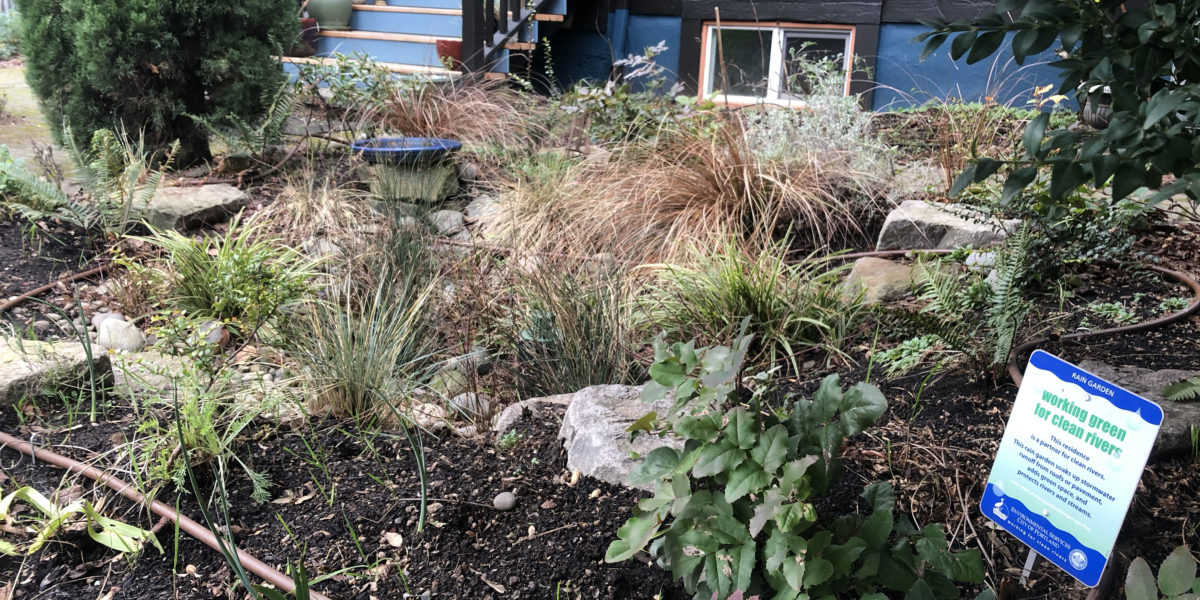
These Rain Gardens Clean City Stormwater with Flowers and Trees
Rain gardens are a popular way to clean city stormwater before it hits sewers and waterways, but now cities like Portland are offering free greenery and landscaping as part of the deal

Photo by Heather Arndt Anderson
Rainwater runoff pollutes urban sewers, but some cities in the West are turning to a win-win solution that will both clean the water and build beautiful rain gardens for homeowners.
A little background: When it rains or storms, the water flowing downward collects bacteria, metals, pesticides and chemicals, oils and other pollutants as it makes its way to the sewers of a city. Once this water enters storm drains, it will eventually enter our waterways and have a significant impact on urban waterway appearance and health. Urban runoff is the most significant human cause of bad water quality in ocean shoreline areas, per a National Water Quality Inventory 1996 Report to Congress. And during snowmelt and big rainstorms (a.k.a. “high precipitation events”), the excess input to sewers can lead to combined sewer overflow (CSO) out of wastewater treatment facilities, essentially, flushing raw sewage straight into rivers and streams.
A rain garden, also known as a bioswale, is the smart win-win solution Los Angeles and Portland are adopting to filter their water. Vegetation is planted in a small depression on a slope, and the roots of plants and trees literally filter out pollutants in the water before it can reach storm drains. Though a rain garden is usually dry, when it rains, it does its job efficiently. 90% of chemicals and 80% of sediments are removed, and 30% more water is soaked into ground aquifers than conventional lawns. The rain garden will even drain within 12 to 48 hours, preventing mosquitoes from becoming a pest. They’re attractive, too; pictured above is the rain garden installed in the front yard of Sunset garden editor Heather Arndt Anderson (photo taken in winter).
